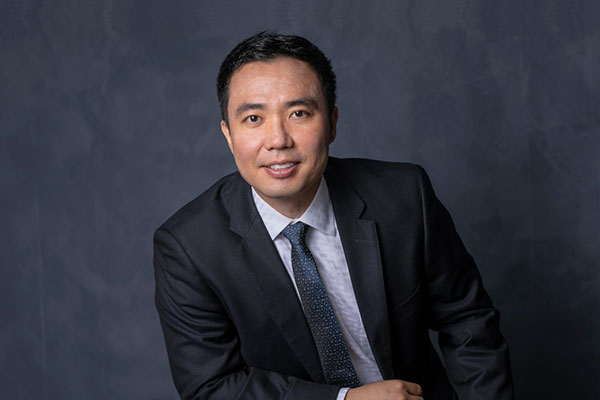It’s time for high-tech economics
William Cong sees opportunities to revolutionize high-tech research with insights from economics.

Lin William Cong, Rudd Family Professor of Management, associate professor of finance, and faculty director of the FinTech at Cornell Initiative
By Jackie Swift, Cornell Research
Scientists have turned to artificial intelligence (AI) models during the COVID-19 pandemic to predict the increase, decrease, and spread of infection. Typically, the models depend on fixed assumptions such as an externally given transmission rate for the virus and a specific pattern to human movements that supposes two people will meet with a given frequency. While this approach can shed light on the situation, it is missing a key component, says Lin William Cong, Rudd Family Professor of Management and associate professor of finance at the Samuel Curtis Johnson Graduate School of Management, and faculty director of the FinTech at Cornell initiative.
“We know that the spread of the disease and the movement of people are driven by economic incentives,” says Cong (pronounced Ts-óh-ng). “If confirmed cases rise, I will stay home because I worry about the risk of catching COVID. But if I lost my job for three months, I have to go out and make a living despite the pandemic. There are some very good AI predictive models that look at the dynamics of COVID and predict how employment will evolve, but they typically look at these issues separately. What if we allow economic incentives to be taken into consideration as part of the COVID model, too?”
To explore this, Cong recently joined with Beijing-based researchers Ke Tang, at Tsinghua University, and Jingyuan Wang and Bing Wang, both at Beihang University, to design a pandemic AI model that includes economic factors. Their model combines a Google community mobility measure that summarizes the movements of people; an employment model based on the assumption that if the employment rate is low, the incentive to work is high; and an epidemiology model on the spread of the disease.
“They all interact with each other, and we use that to predict the evolution of the pandemic and also the employment rate,” Cong explains. “This is one way economic reasoning can help traditional science disciplines.”
